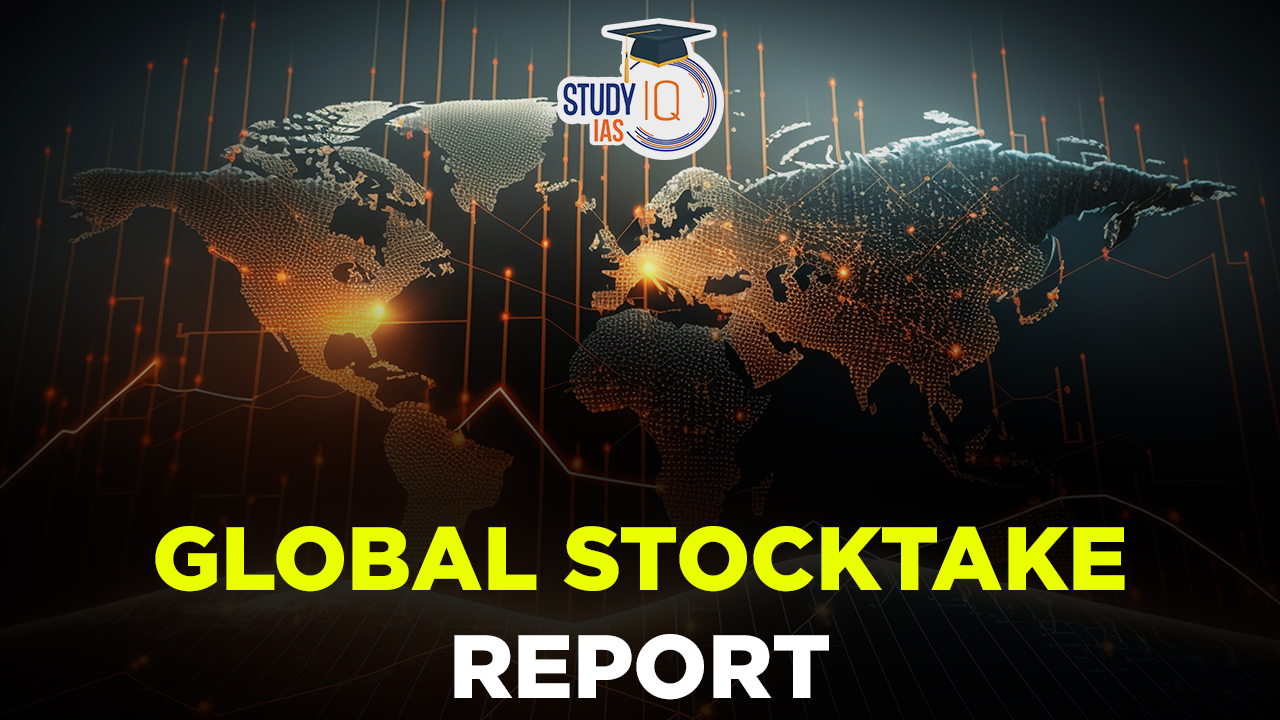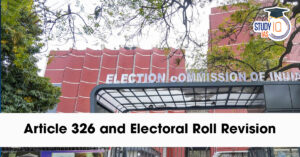Table of Contents
Context: The first official climate change report card, Global Stocktake, has revealed that the world is not on track to meet its long-term goals.
What is Global Stocktake?
- The Global Stocktake is a crucial component of the Paris Agreement.
- It is a process designed to assess and evaluate progress made by countries in achieving the goals of the Paris Agreement.
- It is conducted periodically, typically every five years.
- It looks at various aspects of climate action, including emissions reductions, adaptation measures, and financial support for developing countries.
- The Global Stocktake provides an opportunity for countries to identify gaps and areas where additional efforts are needed to meet the Paris Agreement’s goals.
About the Paris Agreement
- The Paris Agreement is a legally binding international treaty on climate change. It was adopted by 196 Parties at the UNFCCC’s COP21 in Paris in 2015.
- It aims to address climate change by limiting global warming to well below 2 degrees Celsius above pre-industrial levels, with an ambition to limit it to 1.5 degrees Celsius.
- It works on a five- year cycle of increasingly ambitious climate action carried out by countries.
- Every five years, each country is expected to submit an updated national climate action plan – known as Nationally Determined Contribution, or NDC.
Key Findings of the First Global Stocktake Report
A) Context
- Universal Climate Action: The Paris Agreement has driven widespread climate action by setting goals and signaling the urgency of addressing the climate crisis, but much more action is needed.
- Transformation for Resilience: To combat climate change and poverty, governments should support systems transformations for climate resilience and low emissions, with accountable actions from non-Party stakeholders.
- Emphasis on equity and inclusion: While systems transformations offer opportunities, rapid change can be disruptive. A focus on inclusion and equity can increase ambition in climate action and support.
B) Mitigation, Including Response Measures
- Emissions Misalignment: Global emissions don’t align with the Paris Agreement’s temperature goals. There’s a limited time to raise ambition and fulfill commitments to limit warming to 1.5°C.
- Ambitious Mitigation: More ambition is needed in domestic mitigation efforts and setting targets to cut global emissions by 43% by 2030 and 60% by 2035, reaching net-zero CO2 emissions by 2050.
- Sectoral Transformations: Achieving net-zero emissions requires transformations across sectors, including scaling up renewables, phasing out unabated fossil fuels, ending deforestation, and addressing non-CO2 emissions.
- Just Transition: just transitions can support more robust and equitable mitigation outcomes, with tailored approaches addressing different contexts.
- Just transition aims at ensuring that the low-carbon transition is fair, equitable, and inclusive for all stakeholders, particularly those most affected by the transition.
- Economic Diversification: Economic diversification is one of the strategies to address negative impacts of response measures and promote positive synergies.
- Opportunities for such diversification include green industrialization, the greening of supply chains and diversifying to related and unrelated products.
C) Adaptation, Including Loss and Damage
- Urgent Adaptation: Increased adaptation action and efforts to avert, minimize, and address loss and damage are urgently needed, especially for vulnerable communities.
- Climate adaptation refers to the process of adjusting and responding to the impacts and challenges of climate change in order to reduce vulnerability and enhance resilience.
- Fragmented Adaptation: Despite the increasing levels of adaptation, most observed adaptation efforts are fragmented, incremental, sector-specific and unequally distributed across regions.
- Local Context Matters: Locally-informed adaptation is more effective and can promote transformational adaptation.
- Loss and Damage Action: Urgent action is required across policies to manage risks comprehensively and support affected communities.
- Adaptation and funding for loss and damage must rapidly expand from innovative sources, aligning financial flows with climate-resilient development.
D) Means of Implementation and Support and Finance Flows
- International Finance: Mobilizing support for climate action in developing countries requires effective use of international public finance.
- Financial Flows Alignment: Aligning financial flows with low emissions and resilience involves unlocking trillions of dollars for climate action.
- Technology Deployment: Rapid deployment of cleaner technologies, along with innovation and technology transfer, is crucial for developing countries.
- Capacity-Building: Effective country-led and needs-based cooperation is essential for building and retaining capacities for sustained climate action at all levels.


 Daily Quiz 11 July 2025
Daily Quiz 11 July 2025
 Operation Baam: Baloch Separatist Group ...
Operation Baam: Baloch Separatist Group ...
 Article 326 and Electoral Roll Revision ...
Article 326 and Electoral Roll Revision ...





















